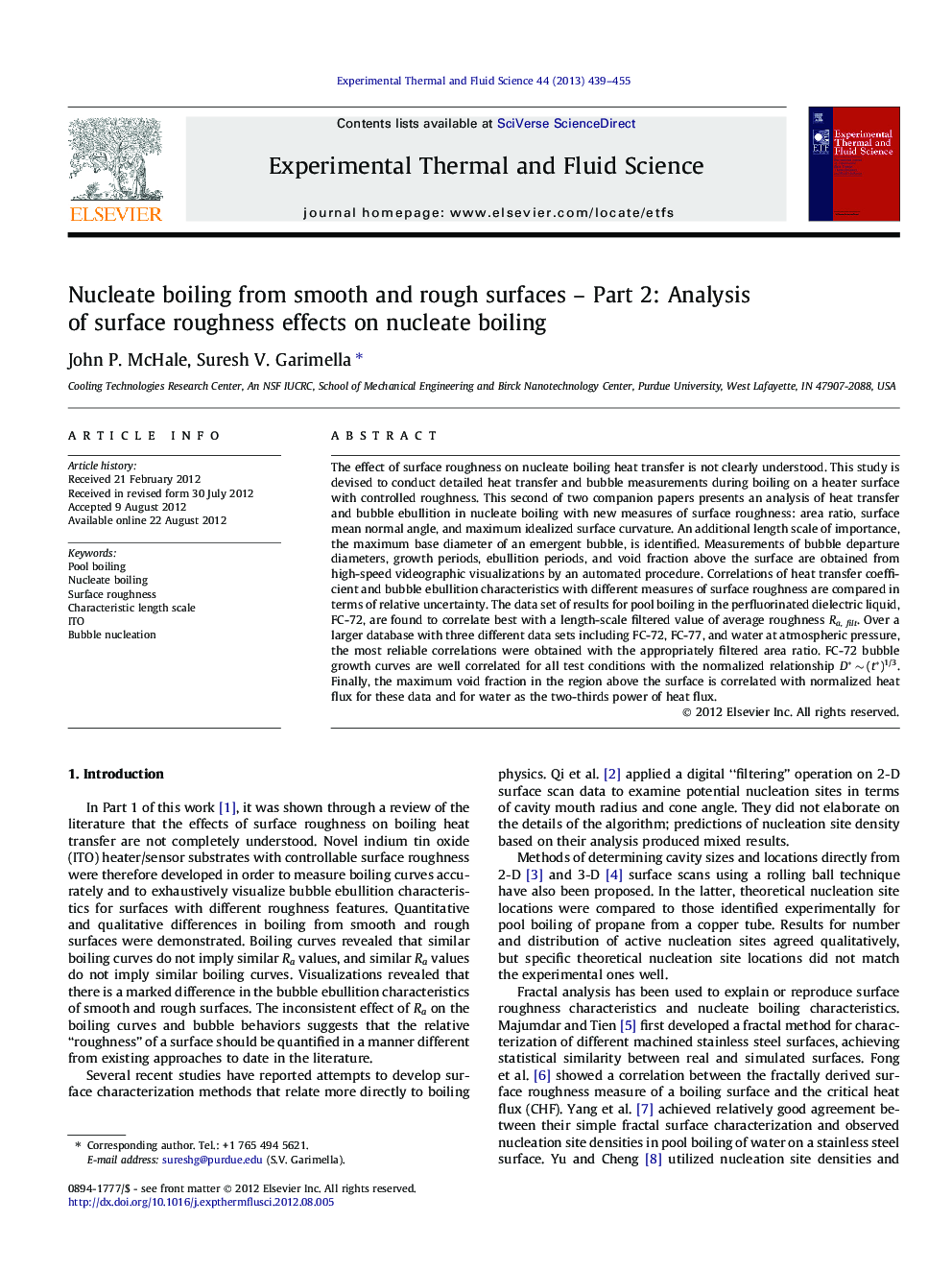| کد مقاله | کد نشریه | سال انتشار | مقاله انگلیسی | نسخه تمام متن |
|---|---|---|---|---|
| 651530 | 1457432 | 2013 | 17 صفحه PDF | دانلود رایگان |

The effect of surface roughness on nucleate boiling heat transfer is not clearly understood. This study is devised to conduct detailed heat transfer and bubble measurements during boiling on a heater surface with controlled roughness. This second of two companion papers presents an analysis of heat transfer and bubble ebullition in nucleate boiling with new measures of surface roughness: area ratio, surface mean normal angle, and maximum idealized surface curvature. An additional length scale of importance, the maximum base diameter of an emergent bubble, is identified. Measurements of bubble departure diameters, growth periods, ebullition periods, and void fraction above the surface are obtained from high-speed videographic visualizations by an automated procedure. Correlations of heat transfer coefficient and bubble ebullition characteristics with different measures of surface roughness are compared in terms of relative uncertainty. The data set of results for pool boiling in the perfluorinated dielectric liquid, FC-72, are found to correlate best with a length-scale filtered value of average roughness Ra, filt. Over a larger database with three different data sets including FC-72, FC-77, and water at atmospheric pressure, the most reliable correlations were obtained with the appropriately filtered area ratio. FC-72 bubble growth curves are well correlated for all test conditions with the normalized relationship D* ∼ (t*)1/3. Finally, the maximum void fraction in the region above the surface is correlated with normalized heat flux for these data and for water as the two-thirds power of heat flux.
► Bubble growth rates measured for FC-72 boiling on rough surfaces.
► Different roughness measures evaluated as to their effects on boiling heat transfer.
► The maximum base diameter of an emergent bubble proposed as important length scale.
► Bubble growth curves found to follow D∗ ∼ (t∗)1/3 with appropriate normalization.
► Maximum void fractions found to follow α ∼ (q∗)2/3 with appropriate normalization.
Journal: Experimental Thermal and Fluid Science - Volume 44, January 2013, Pages 439–455